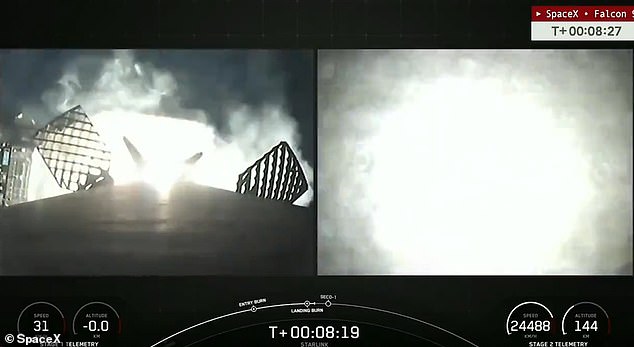After four years without incident, SpaceX engineers had good reason to be confident of a routine launch this week.
But that confidence literally went up in smoke this morning after a Falcon 9 booster rocket dramatically exploded shortly after landing.
Booster 1062 had just broken the record for the most consecutive launches without failure when it failed to land a SpaceX drone ship in the Atlantic Ocean.
Shocking video captured the moment the rocket suddenly flipped over and was engulfed in a ball of purple flames.
This is the first time since 2021 that a SpaceX booster stage has failed to land after launching its payload into orbit.
Shocking footage captures the moment a Starlink Falcon 9 booster rocket bursts into flames during a failed landing this morning
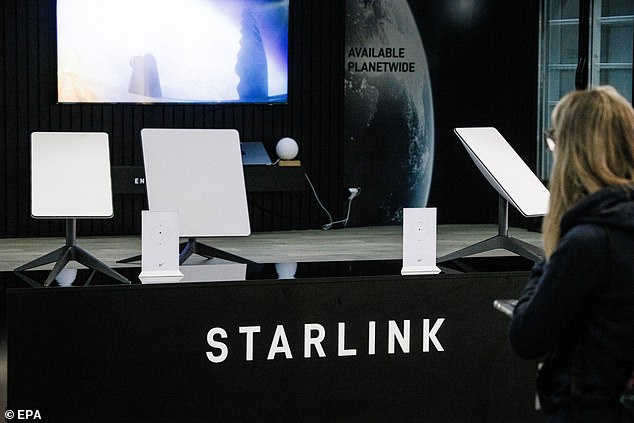
The rocket was carrying a payload of 21 satellites for the Starlink network that were sent into orbit before the rocket was destroyed. Pictured: Starlink satellite dishes
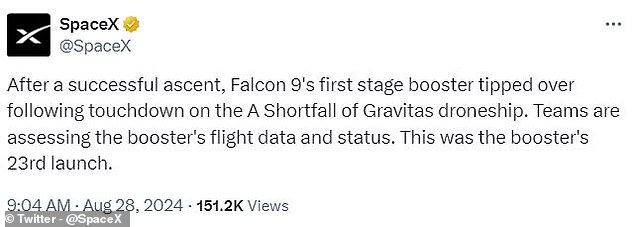
In a statement on X, SpaceX wrote that the Falcon 9 rocket “flipped over” after its drone landing.
The Falcon 9 rocket launched from Space Launch Complex 40 at Canaveral Space Force Station in Florida at 3:48 a.m. EDT (08:48 BST).
In its payload, the rocket carried 21 Starlink satellites, including 13 with the new Direct to Cell capabilities.
The rocket launched and separated successfully, sending the satellites into orbit.
However, as rocket 1062 approached the unmanned spacecraft ‘A Shortfall of Gravitas’, it appeared to suffer a catastrophic failure that ended a streak of 267 successful landings for the company.
SpaceX’s livestream captured the moment the booster stage landed on the unmanned craft before almost immediately collapsing, engulfed in flames.
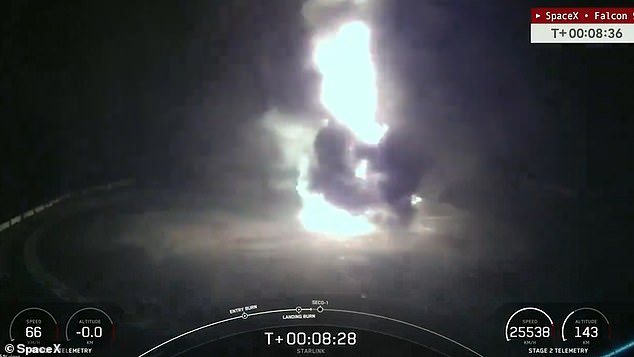
About eight and a half minutes after launch, the booster stage landed on the drone ship ‘A Shortfall of Gravitas’. However, the rocket appeared to tip over and explode.
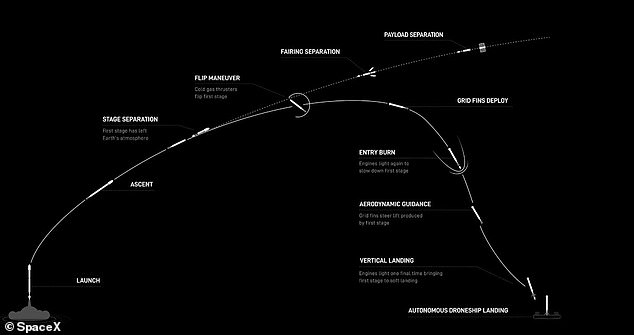
The Falcon 9 booster stage is designed to separate from the payload and then flip up in mid-air so that the remaining fuel can be used to descend back to Earth. Upon safe landing, the boosters can be reused, greatly reducing the costs of spaceflight.
In a post on X, SpaceX confirmed the destruction of the booster, writing: ‘After a successful ascent, the Falcon 9 first stage booster flipped over upon landing on the unmanned spacecraft A Shortfall of Gravitas.
“The teams are evaluating the flight data and the status of the rocket. This was the 23rd launch of the rocket.”
In response, SpaceX suspended the launch of a second Starlink mission scheduled to take off from California later that evening.
In a statement on X, the company wrote: “We backed off our second launch of the night to give the team time to review the booster landing data from the previous launch.”
SpaceX’s Falcon 9 booster stages are designed to spin in mid-air so they can use remaining fuel to slow their descent back to Earth.
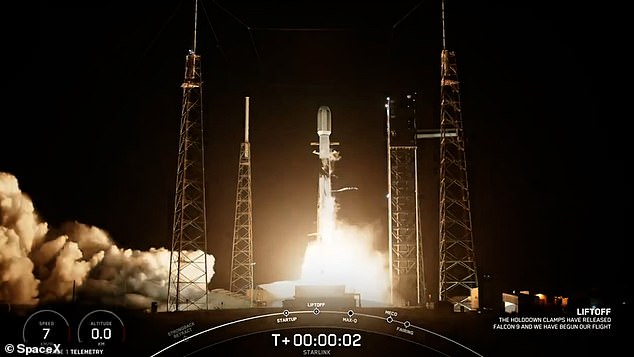
The rocket launched from Pace Launch Complex 40 at Cape Canaveral Space Force Station (pictured) in Florida at 3:48 a.m. EDT. This was the 23rd time the booster stage was used.
Using fins as aerodynamic guidance, the booster navigates back toward an autonomous unmanned craft where it is supposed to land safely.
This allows booster stages to be reused multiple times, significantly reducing the overall cost of the launch.
However, this process is extremely technically challenging and booster stages frequently explode during early development.
There have been numerous instances where Falcon 9 booster rockets have dramatically detonated after hitting the drone too quickly or tipping over upon landing.
Before today, the last time a rocket failed to land was in February 2021, when booster B1059 met a fiery end on the drone ship ‘Of Course I Still Love You’.
SpaceX has yet to comment on what caused today’s landing to go awry.

SpaceX says it will suspend a planned second Starlink launch to give crew time to review data
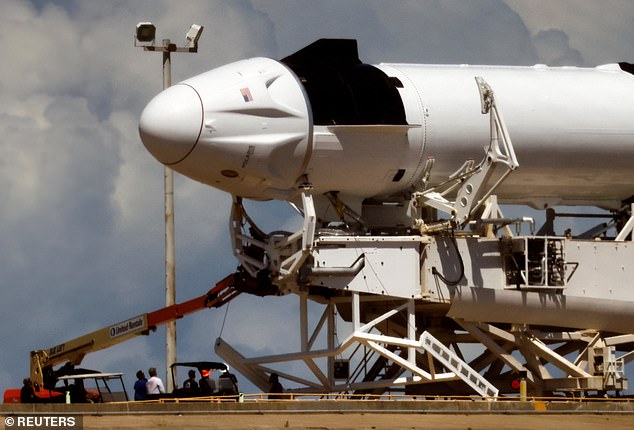
SpaceX has not commented on whether this will affect the launch schedule of the Polaris Dawn mission scheduled to launch on a Falcon 9 rocket later this week.
However, even after these failures, the reusable rocket still has an exceptionally high success rate and SpaceX is unlikely to retire the Falcon 9 from regular use.
Since 2018, when the latest variant of the Falcon 9, Block 5, was introduced, the rocket has become a workhorse for the public and private space sectors.
Before its destruction today, booster 1062 had even been used for the Inspiration4 mission, which carried the first all-civilian crew into orbit.
Billionaire Jared Isaacman, a member of the original Inspiration4 crew, will return aboard a Falcon 9 rocket later this week as part of the Polaris Dawn mission.
This daring project aims to launch the first spacewalk by non-professional astronauts.
However, the launch was delayed this morning due to bad weather at the planned splashdown site off the coast of Florida.
It is not yet clear whether this failure will have any impact on the launch schedule of Polaris Dawn.

